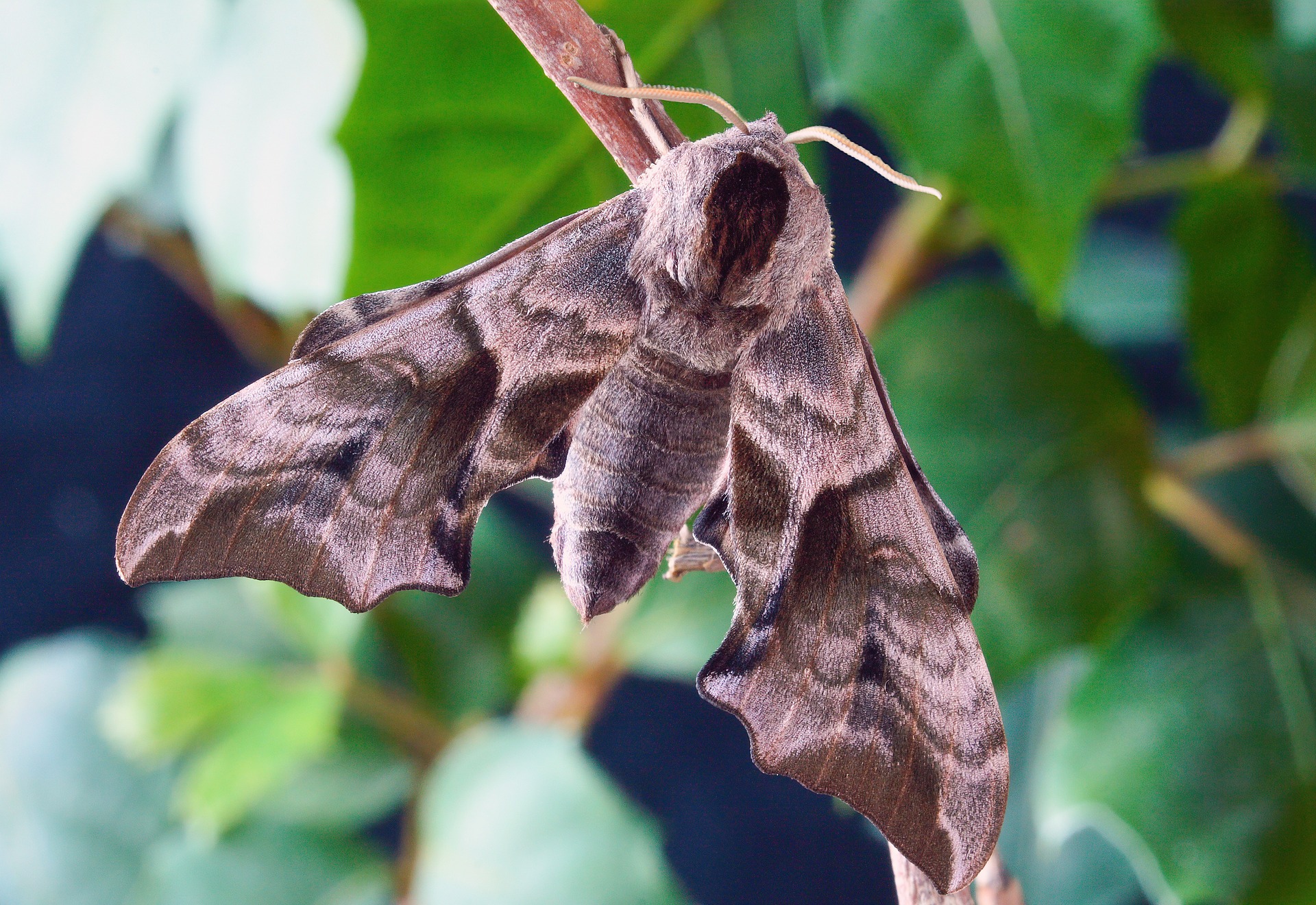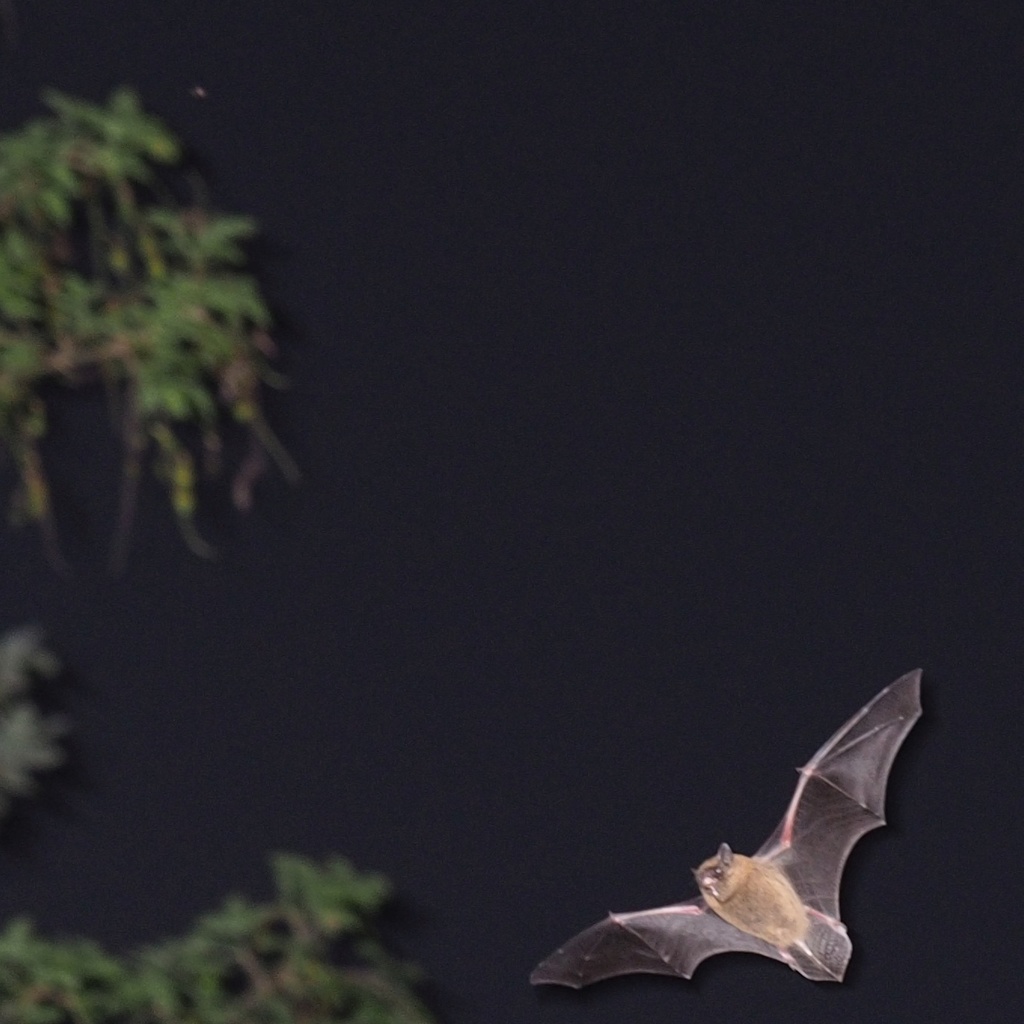Bright Side of the Night – 2.3.2
Is Artificial Light at Night a Stress Factor for Biodiversity?
Artificial Light – The Great Disruptor
Light pollution plays a role in the global loss of biodiversity. It is disruptive at all levels of biodiversity – in terms of genes, species, communities, populations, and ecosystems. It has the potential to further disrupt ecosystems that are already suffering from multiple weakening factors.
When Systems Are Out of Joint
In habitats illuminated by street lights, invertebrate predators and scavengers have been observed to occur in larger numbers than they do in comparative locations without artificial light. In particular, scientists found that amber light and, to a lesser extent, white light suppress the flowering of the greater birdsfoot trefoil (Lotus pedunculatus). For instance, when pea aphids (Acyrthosiphon pisum) switched from sucking the plant juices from the shoots to the flowers in August, the number of animals in the amber light boxes in the field trial decreased significantly – presumably because fewer inflorescences were present. Another example of this phenomenon can be seen in some mountain valleys in Switzerland, where the lesser horseshoe bat has disappeared completely after street lighting was installed. Concurrently, the less light-shy common pipistrelle has spread into these areas. The suspicion is that the lesser horseshoe bat disappeared due to competitive pressure. Both species are about the same size and eat the same spectrum of food.
Insects as Ecosystem Service Providers
In the adult stage, many insects feed on nectar and pollen from plants. Passing from flower to flower, pollen are transferred. If the pollen lands on the carpel of a seed plant of the same species, fertilization can take place. For the plant however, the focus goes beyond reproduction to the rearrangement of genetic material. All this makes pollination one of the most significant interactions between plants and animals, and thus, one of the crucial ecosystem services of nocturnal insects.
Nocturnal Insects are Key Pollinators
Nocturnal insects thus make essential contributions to the maintenance of biodiversity, pest regulation and soil quality. It was found in a study[1] that flowers cultivated under artificial lighting received 62 percent fewer visits from nocturnal pollinators than those growing at dark reference sites. The loss in terms of pollination by nocturnal insects was not compensated by daytime pollinators, as the case of the cabbage thistle (Cirsium oleraceum) showed. The reduced number of nocturnal pollinators resulted in a 13 percent decrease in the number of fruits per plant. Artificial light thus clearly influenced the sexual propagation of the plants. In the absence of pollination, the long-term composition of vegetation changes, sometimes even leading to a loss of species.
From Vertical Migration to Irritation
Under cover of darkness, microbial fauna swim to the surface of the water to feed on algae. In the daytime, zooplankton can be found in lower layers of water. Light pollution—even the relatively weak brightness caused by urban light pollution—suppresses this nightly vertical migration; the zooplankton no longer ascends. This disrupts the aquatic food chain and leads to more frequent algal bloom, and thus, to deterioration in the quality of the water.
[1] Knop et al. (2017)


Further Resources
Links below will redirect you to external websites. In accordance with the European data protection declarations, we would like to point out that by clicking on these links you may send data to external providers. We cannot prevent that.
Images
![]() Artificial light at night: Potential sources, biodiversity impacts and responses are complex.
Artificial light at night: Potential sources, biodiversity impacts and responses are complex.
Videos
![]() Light Pollution and Its Impact on the Ocean (What We Can Do)
Light Pollution and Its Impact on the Ocean (What We Can Do)
![]() Why you should care about light pollution (DW Planet A)
Why you should care about light pollution (DW Planet A)
![]() The Strange Scourge of Light Pollution (Sci Show)
The Strange Scourge of Light Pollution (Sci Show)
![]() Light Pollution 101 | National Geographic
Light Pollution 101 | National Geographic
 Auswirkungen von Lichtverschmutzung auf Lebewesen (Natur braucht Nacht)
Auswirkungen von Lichtverschmutzung auf Lebewesen (Natur braucht Nacht)
 Inquinamento luminoso: a che punto siamo?
Inquinamento luminoso: a che punto siamo?
Online Resources
![]()
 The influence of light pollution on plants, animals and ecosystems (Helle Not)
The influence of light pollution on plants, animals and ecosystems (Helle Not)
![]()
 What happens at night just beyond our doorstep? Bothersome-Brightness-Cartoons. (Helle Not)
What happens at night just beyond our doorstep? Bothersome-Brightness-Cartoons. (Helle Not)
![]()
 Verlust der Nacht / Loss of the Night: Interdisciplinary Research network
Verlust der Nacht / Loss of the Night: Interdisciplinary Research network
![]() Into the Night in the Kaunertal Valley (Online publication)
Into the Night in the Kaunertal Valley (Online publication)
![]() Buglife: A Review of the Impact of Artificial Light on Invertebrates
Buglife: A Review of the Impact of Artificial Light on Invertebrates
![]() Global light pollution is affecting ecosystems—what can we do? (UN Environment Programme)
Global light pollution is affecting ecosystems—what can we do? (UN Environment Programme)
 Unterwegs in die Nacht im Kaunertal (Online publication)
Unterwegs in die Nacht im Kaunertal (Online publication)
 Konzept zur nachtbezogenen Naturpädagogik (Online publication)
Konzept zur nachtbezogenen Naturpädagogik (Online publication)
 Inquinamento luminoso: un problema che in Italia nessuno ha voglia di affrontare – Italia nostra
Inquinamento luminoso: un problema che in Italia nessuno ha voglia di affrontare – Italia nostra
 Inquinamento luminoso in crescita: ulteriore minaccia per l’ecosistema – ADI Apicoltura
Inquinamento luminoso in crescita: ulteriore minaccia per l’ecosistema – ADI Apicoltura
 Il lato oscuro della luce: gli effetti dell’inquinamento luminoso sull’impollinazione – LifeGate
Il lato oscuro della luce: gli effetti dell’inquinamento luminoso sull’impollinazione – LifeGate
 Insetti e inquinamento luminoso – Focus
Insetti e inquinamento luminoso – Focus
Further Readings
![]()
 Regularly updated Literature and links with regards to light pollution and dark skies (Helle Not)
Regularly updated Literature and links with regards to light pollution and dark skies (Helle Not)
![]()
 Literature & Links on the website “Verlust der Nacht/Loss Competition for food by expanding pipistrelle bat populations (Pipistrellus pipistrellus) might contribute to the decline of lesser horseshoe bats (Rhinolophus hipposideros)of the Night”
Literature & Links on the website “Verlust der Nacht/Loss Competition for food by expanding pipistrelle bat populations (Pipistrellus pipistrellus) might contribute to the decline of lesser horseshoe bats (Rhinolophus hipposideros)of the Night”
![]() Scientific Paper: Ecological light pollution (Longcore & Rich 2004)
Scientific Paper: Ecological light pollution (Longcore & Rich 2004)
![]() Scientific Paper:Street lighting changes the composition of invertebrate communities (Davies et al. 2012)
Scientific Paper:Street lighting changes the composition of invertebrate communities (Davies et al. 2012)
![]() Scientific Paper: Cascading effects of artificial light at night (Bennie et al. 2015)
Scientific Paper: Cascading effects of artificial light at night (Bennie et al. 2015)
![]() Scientific Paper: Competition for food by expanding pipistrelle bat populations (Pipistrellus pipistrellus) might contribute to the decline of lesser horseshoe bats (Rhinolophus hipposideros) (Arlettaz et al. 2000)
Scientific Paper: Competition for food by expanding pipistrelle bat populations (Pipistrellus pipistrellus) might contribute to the decline of lesser horseshoe bats (Rhinolophus hipposideros) (Arlettaz et al. 2000)
![]() Scientific Paper: Urban light pollution alters the diel vertical migration of Daphnia (Moore et al. 2017)
Scientific Paper: Urban light pollution alters the diel vertical migration of Daphnia (Moore et al. 2017)
![]() Scientific Paper: Artificial light at night as a new threat to pollination (Knop et al. 2017)
Scientific Paper: Artificial light at night as a new threat to pollination (Knop et al. 2017)
 Publikation: Lichtverschmutzung und die Vulnerabilität nachtaktiver Insekten (Suchy & Stoll, 2019)
Publikation: Lichtverschmutzung und die Vulnerabilität nachtaktiver Insekten (Suchy & Stoll, 2019)
 Impatto dell’illuminazione artificiale sugli organismi viventi – Giuseppe Camerini
Impatto dell’illuminazione artificiale sugli organismi viventi – Giuseppe Camerini
Teaching Material
![]() Teaching Material Kit on Light Pollution and its negative effects in 4 Languages (English, Spanish, German, Portuguese) (Stars4all)
Teaching Material Kit on Light Pollution and its negative effects in 4 Languages (English, Spanish, German, Portuguese) (Stars4all)
For Kids
![]()
 Materials for young scientists: Quiz, Arts and craft corner, App and Exhibition for schools. (Loss of the Night network)
Materials for young scientists: Quiz, Arts and craft corner, App and Exhibition for schools. (Loss of the Night network)
 Unterrichtsmaterialien für Schulen – “Lichtverschmutzung” (Die Umweltberatung)
Unterrichtsmaterialien für Schulen – “Lichtverschmutzung” (Die Umweltberatung)
 Wissens- und Methodenbox „Kunstlicht, Nacht und Sternenhimmel“ (Naturfreunde)
Wissens- und Methodenbox „Kunstlicht, Nacht und Sternenhimmel“ (Naturfreunde)
 L’impollinazione spiegata ai bambini – YouTube
L’impollinazione spiegata ai bambini – YouTube
